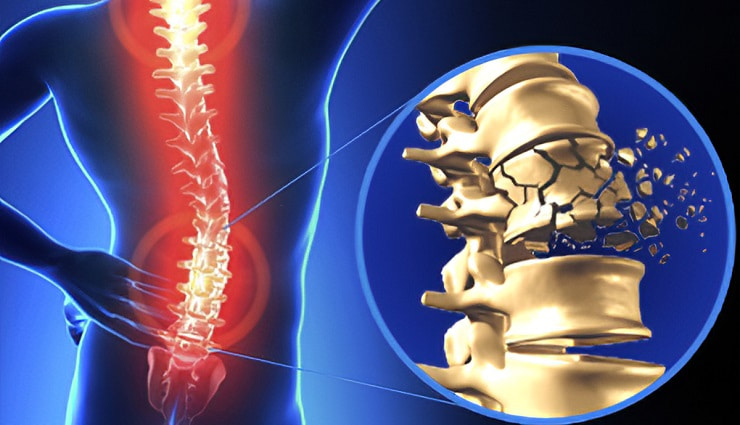Spinal cord injuries: types, symptoms, treatment, and prevention
Spinal cord injuries occur when the spinal cord or the nerve endings of the spinal canal are damaged. The result of this type of injury is usually a permanent loss of strength, sensation, and other lower body functions. Besides changing his mentality, emotions, and social life, a spinal cord injury can affect all aspects of his life. With new therapies and rehabilitation, many people can live independent and successful lives. In this article, you will learn about spinal cord injuries, their treatment, and first aid for spinal cord injuries.
Spinal cord injury: what is it?
Nerve signals travel from the brain to other parts of the body through the spinal cord. Multilayered tissues called meninges and spine protect the spinal cord. A sudden, severe blow to the spine is the most common cause of spinal cord injuries. Nerves and spinal cord are damaged by broken and damaged spine bones. It is possible to amputate the spinal cord completely in rare cases.
As a result of spinal cord injuries, the organs below the injury site lose sensation and function. One of the most common sites of injury is the lumbar spine or thorax. It is one of the most common causes of death and permanent disability in children and adults.
Spinal cord injuries: types:
The lower part of the injured area is not functional after a complete spinal cord injury. Movement and sensation are included. Neither side is affected equally by it. Spinal cord injuries can occur anywhere along its length.
Damage to the lower parts of the injured site is incomplete. One limb may be able to move more than another, sense specific parts of the body, or have broader functions on one side over the other. Any part of the spinal cord can be affected by incomplete spinal cord injuries.
Injuries to the spinal cord cause what symptoms?
The severity and location of the spinal cord injury determine the symptoms of this complication. It is possible to lose sensation and movement beneath the injury site as a result of spinal shock. Spinal cord injuries can last for days or weeks. Depending on the location of the injury, other symptoms may appear in addition to shock.
The more severe the symptoms, the higher the spinal cord injury site. The respiratory muscles and ability to breathe are affected by damage to cervical vertebrae 2 and 3 (second and third vertebrae of the spine). Lower vertebrae, such as the lumbar vertebrae, can damage nerves and muscles that control the bladder, intestines, and legs.

During a series of tests, the doctor and the care team determine the severity and location of the spinal cord injury. Symptoms of spinal cord injury include:
The inability to move;
Feelings such as heat, cold, or touch are lost;
Lack of control over bladder or bowel movements;
Involuntary responses that are severe;
Sexual function and fertility changes;
Nerve damage in the spinal cord causes pain or burning;
Breathing difficulties, coughing, and lung secretions.
The following are emergency signs of spinal cord injury after an accident:
Neck, head, and back pain;
Having weakness, inconsistency, or paralysis in any part of the body;
Numbness, tingling, and loss of sensation in the hands, feet, and fingers;
Control of bladder and bowels is lost;
A change in balance and gait;
After an injury, it is difficult to breathe;
Neck or waist twisted.
Spinal cord injuries can be caused by injuries to the spine, lumbar discs, tendons or even the spinal cord itself. When the spinal cord is struck suddenly, it can rupture, dislocate, crush, or compress, resulting in a spinal cord injury. It is also possible for bullets and knives to penetrate the spine and rupture the spinal cord.
In the days and weeks following the accident, swelling, bleeding, and fluid may accumulate around the spinal cord, causing more damage. The following factors can cause non-traumatic spinal cord injuries:
Arthritis;
Cancer;
Inflammation;
Infection;
Analyzing the spinal discs:
Each year, half of all spinal cord injuries are caused by motor vehicle accidents.
Falling is the most common cause of spinal cord injury after 65.
About 12% of spinal cord injuries are caused by severe collisions, such as bullets or stabs.
10% of spinal cord injuries are caused by sports activities, such as active sports and diving in shallow water.
Spinal cord injury diagnosis:
In an emergency, your doctor will ensure that a spinal cord injury does not affect your breathing or heart rate. Here are some neural functions to check:
A person’s ability to move their limbs;
Touch is an example of a sensory function.
Spinal cord injuries can be diagnosed using imaging tests, such as:
A CT scan is used to check for broken bones, blood clots, or damaged blood vessels.
An MRI is used to examine the spinal cord or soft tissues.
Broken or dislocated bones can be observed with an X-ray.
In addition to checking electrical activity in muscles and nerve cells, the electromyogram or EMG test is also used. A peripheral nerve test is not necessary, but it is performed if spinal cord injury is associated with peripheral nerve damage.
In the event of a spinal cord injury, what is the immediate treatment?
There may be a need for spinal surgery in an emergency. Bone fractures, blood clots, and damaged tissues can also lead to spinal cord injuries.
Studies suggest that corticosteroids may be helpful in some cases.
Enhance blood flow;
Ensure nerve function;
Reducing inflammation.


